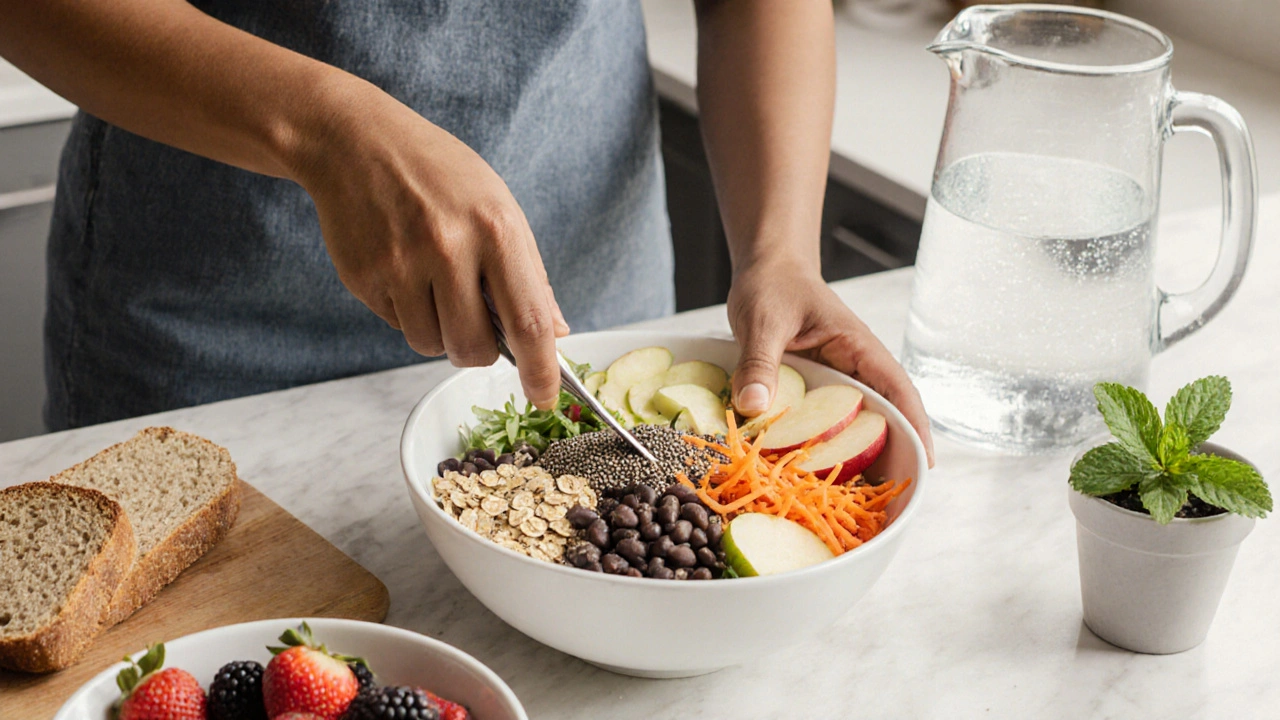

When working with diet for diarrhea, a short‑term eating plan that reduces stool frequency and helps restore fluid balance. Also known as diarrhea diet, it encompasses specific food groups and fluid choices that calm an upset gut. One of the first tools many health professionals recommend is the BRAT diet, a bland combination of bananas, rice, applesauce, and toast designed to provide gentle calories while limiting irritants. Another cornerstone is probiotic foods, live‑culture products such as yogurt or kefir that help repopulate beneficial bacteria, which influence recovery speed. Finally, maintaining proper hydration isn’t optional; an oral rehydration solution, a balanced mix of water, electrolytes, and glucose requires adequate intake to replace losses and prevent dehydration.
The first step is fluid management. Plain water, clear broths, and electrolyte drinks keep the body from shrinking. Aim for small sips every 15‑20 minutes rather than big gulps that can trigger more loss. If you can’t tolerate plain water, dilute juice or a homemade ORS (1 L water + 6 tsp sugar + ½ tsp salt) works well. Next, focus on low‑fiber, low‑fat foods that are easy on the gut. The BRAT diet is a classic example, but you can also add boiled potatoes, plain crackers, or skinless chicken. These foods provide energy without adding bulk that could worsen loose stools.
While short‑term bland eating stops the immediate crisis, you also want to set the stage for a healthier gut. Introducing probiotic foods as soon as you can keep stool frequency down and shorten the illness duration. Yogurt with live cultures, kefir, or a small serving of fermented sauerkraut can be added after the initial 24‑48 hours, provided you tolerate them. Fiber re‑introduction should be gradual; start with soluble fibers like oatmeal or peeled apples, which bind water and firm up stools. Avoid high‑FODMAP items, caffeine, alcohol, and very spicy foods until symptoms settle.
Electrolyte balance is another hidden piece of the puzzle. Diarrhea wipes out sodium, potassium, and magnesium, so foods rich in these minerals help restore equilibrium. A banana supplies potassium; a baked potato with a pinch of salt adds both sodium and potassium; a handful of almonds offers magnesium. Pair these with the fluid plan and you’ve covered the major losses.
For people with chronic or travel‑related diarrhea, the diet must adapt. In tropical regions, contaminated water is a common trigger, so a strict ORS regimen and cautious food choices become critical. For medication‑induced diarrhea, you may need to avoid certain sugars (like lactose) that the drug makes harder to digest. Always check medication side‑effects and discuss dietary tweaks with your pharmacist or doctor.
When symptoms persist beyond 48 hours, or you notice blood, fever, or severe pain, the diet alone isn’t enough. It’s a sign to seek medical care, as the underlying cause may need antibiotics, antidiarrheal meds, or further testing. But for most short‑term bouts, sticking to the principles above dramatically reduces discomfort and speeds up recovery.
Below you’ll find a curated collection of articles that dive deeper into each of these topics—quick fluid tricks, step‑by‑step BRAT variations, probiotic guides, and detailed oral rehydration formulas—so you can pick the right tool for your situation and get back to feeling normal fast.

Learn how soluble fiber can tame chronic diarrhea, which foods boost the right fiber, which to avoid, and practical tips for a balanced diet.